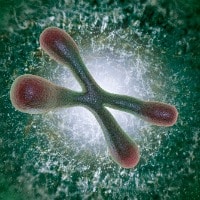Gladstone Institute scientists have pinpointed a critically important mechanism that safeguards mice from enduring a human disease of aging. This discovery also helps explain the breadth of disease severity that typically occurs in humans. The finding is centered on the role played by telomeres. These are the protective caps found on the ends of chromosomes that whither away across posterity.
Telomeres and Diseases of Aging
The deterioration of telomeres has been linked to diseases of aging for some time now. Yet the manner in which telomere length impacts human disease has been unresolved. Scientists now believe that shortening telomeres in mice that have the human genetic mutation tied to heart disease causes a particularly nasty buildup of calcium within heart vessels and valves. This model empowers researchers to determine viable new medications for the disease. The model could also lead to solutions to other human disorders of aging.
Consider calcific aortic valve disease (CAVD) that causes calcium to build up within the heart until it hardens. It is treated through the replacement of the valve with heart surgery. The disease develops as one ages and one of two NOTCH1 gene copies endures a mutation. Most people have two copies of these genes. When the first copy is lost, the remaining copy might not create enough protein to allow adequate functioning. Decreasing protein by half typically results in disease in humans yet a similar change in mice allows for protection against the disease. Scientists are not sure why this is the case.
About the Study
Gladstone scientists published their latest study’s results in the Journal of Clinical Investigation. These researchers tied telomere length to risk and resistance to diseases. Lab mice have inherently longer telomeres that seem to guard against age-related conditions like the above referenced CAVD.
Study Results
The findings show that telomere length plays a critical role in the mouse model of human disease that is age-dependent. The model offers the opportunity to analyze the mechanisms through which telomeres impact age-dependent disease. The model also provides a means of testing therapies for aortic valve disease. The academicians who previously pinpointed NOTCH1 as being responsible for human CAVD used mice with abbreviated telomeres and missing a NOTCH1 copy as a mutation of the gene alone did not cause valve disease.
To the researchers’ surprise, mice with abbreviated telomeres and NOTCH1 mutation displayed the cardiac abnormalities observed in humans. Mice with especially short telomeres endured the most heart damage. Some even displayed indications of valve disease immediately after birth. It is thought that the length of telomeres impacts the severity of diseases through the alteration of gene expression.
Why the Findings are Important
It is worth noting that previous research determined that individuals with valve calcification have abbreviated telomeres compared to healthy patients of a similar age. Certain patients with NOTCH1 mutation suffer CAVD in their 50s. Others are born with valve abnormalities. The new findings indicate that telomere length is responsible for the differences in disease severity. Scientists have found it difficult to model human diseases created by the mutation of a single copy of a gene in animals like mice. This stumbling block impeded research on complicated conditions and restricted the potential to discover therapeutics.
The gradual shortening of long telomeres that serve protective purposes in mice reproduced the disease caused by the mutation of NOTCH1 and recapitulated the breadth of disease severity in human beings. The researchers will now use mouse models of CAVD to determine if potential medication therapies can be identified. Their aim is to pinpoint the first successful medical treatment for CAVD.




